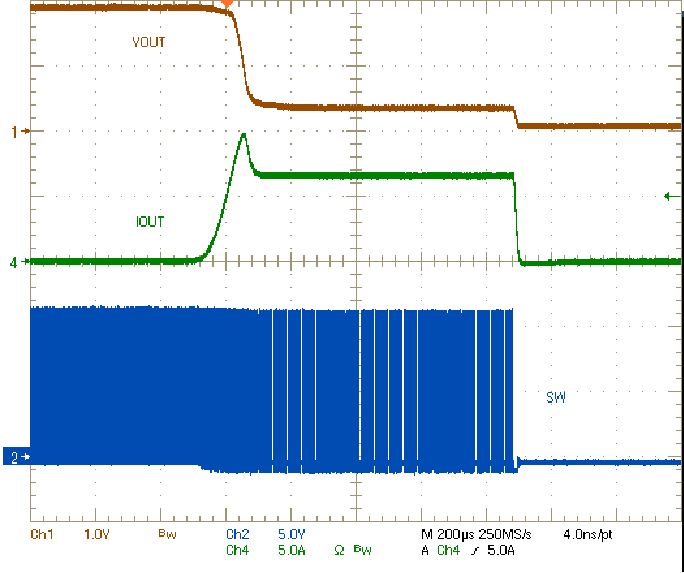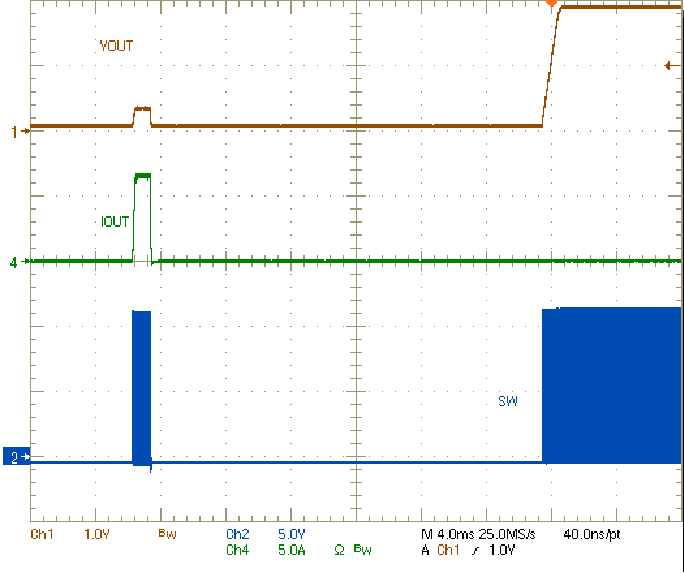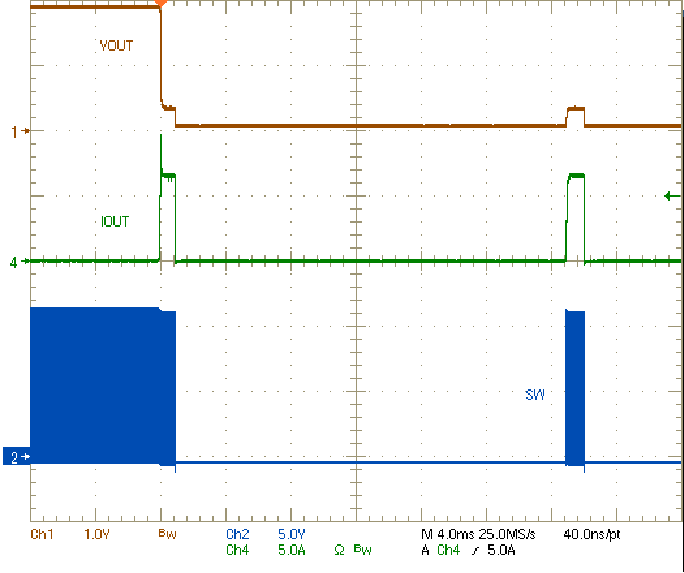SLVUB56A July 2017 – September 2021 TPS54424
2.10 Hiccup Mode Current Limit
Figure 2-17, Figure 2-18, and Figure 2-19 show the TPS54424EVM-779 hiccup mode current limit feature. When an overcurrent event occurs, the TPS54424EVM-779 shuts down and restarts. Figure 2-17 shows the TPS54424EVM-779 entering hiccup mode in an overcurrent condition. Figure 2-18 shows TPS54424EVM-779 entering hiccup mode with a longer timescale to show the hiccup period. Figure 2-19 shows TPS54424EVM-779 exiting hiccup mode after the overcurrent condition is removed.
 Figure 2-17 TPS54424EVM-779 Hiccup Mode Current Limit
Figure 2-17 TPS54424EVM-779 Hiccup Mode Current Limit Figure 2-19 TPS54424EVM-779 Hiccup Mode Stop
Figure 2-19 TPS54424EVM-779 Hiccup Mode Stop Figure 2-18 TPS54424EVM-779 Hiccup Mode Start
Figure 2-18 TPS54424EVM-779 Hiccup Mode Start